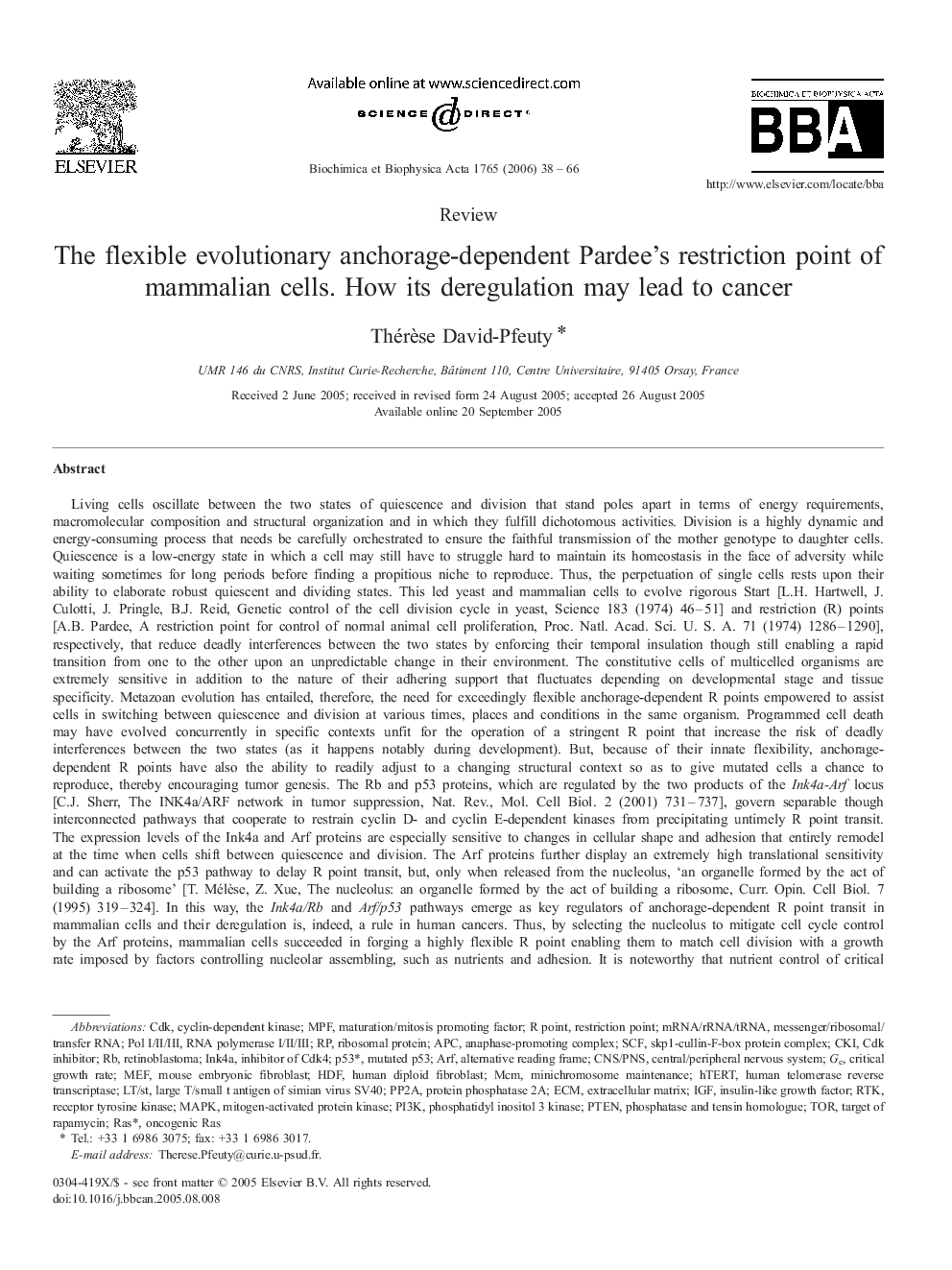| Article ID | Journal | Published Year | Pages | File Type |
|---|---|---|---|---|
| 2101251 | Biochimica et Biophysica Acta (BBA) - Reviews on Cancer | 2006 | 29 Pages |
Living cells oscillate between the two states of quiescence and division that stand poles apart in terms of energy requirements, macromolecular composition and structural organization and in which they fulfill dichotomous activities. Division is a highly dynamic and energy-consuming process that needs be carefully orchestrated to ensure the faithful transmission of the mother genotype to daughter cells. Quiescence is a low-energy state in which a cell may still have to struggle hard to maintain its homeostasis in the face of adversity while waiting sometimes for long periods before finding a propitious niche to reproduce. Thus, the perpetuation of single cells rests upon their ability to elaborate robust quiescent and dividing states. This led yeast and mammalian cells to evolve rigorous Start [L.H. Hartwell, J. Culotti, J. Pringle, B.J. Reid, Genetic control of the cell division cycle in yeast, Science 183 (1974) 46–51] and restriction (R) points [A.B. Pardee, A restriction point for control of normal animal cell proliferation, Proc. Natl. Acad. Sci. U. S. A. 71 (1974) 1286–1290], respectively, that reduce deadly interferences between the two states by enforcing their temporal insulation though still enabling a rapid transition from one to the other upon an unpredictable change in their environment. The constitutive cells of multicelled organisms are extremely sensitive in addition to the nature of their adhering support that fluctuates depending on developmental stage and tissue specificity. Metazoan evolution has entailed, therefore, the need for exceedingly flexible anchorage-dependent R points empowered to assist cells in switching between quiescence and division at various times, places and conditions in the same organism. Programmed cell death may have evolved concurrently in specific contexts unfit for the operation of a stringent R point that increase the risk of deadly interferences between the two states (as it happens notably during development). But, because of their innate flexibility, anchorage-dependent R points have also the ability to readily adjust to a changing structural context so as to give mutated cells a chance to reproduce, thereby encouraging tumor genesis. The Rb and p53 proteins, which are regulated by the two products of the Ink4a-Arf locus [C.J. Sherr, The INK4a/ARF network in tumor suppression, Nat. Rev., Mol. Cell Biol. 2 (2001) 731–737], govern separable though interconnected pathways that cooperate to restrain cyclin D- and cyclin E-dependent kinases from precipitating untimely R point transit. The expression levels of the Ink4a and Arf proteins are especially sensitive to changes in cellular shape and adhesion that entirely remodel at the time when cells shift between quiescence and division. The Arf proteins further display an extremely high translational sensitivity and can activate the p53 pathway to delay R point transit, but, only when released from the nucleolus, ‘an organelle formed by the act of building a ribosome’ [T. Mélèse, Z. Xue, The nucleolus: an organelle formed by the act of building a ribosome, Curr. Opin. Cell Biol. 7 (1995) 319–324]. In this way, the Ink4a/Rb and Arf/p53 pathways emerge as key regulators of anchorage-dependent R point transit in mammalian cells and their deregulation is, indeed, a rule in human cancers. Thus, by selecting the nucleolus to mitigate cell cycle control by the Arf proteins, mammalian cells succeeded in forging a highly flexible R point enabling them to match cell division with a growth rate imposed by factors controlling nucleolar assembling, such as nutrients and adhesion. It is noteworthy that nutrient control of critical size at Start in budding yeast has been shown recently to be governed by a nucleolar protein interaction network [P. Jorgensen, J.L. Nishikawa, B.-J. Breitkreutz, M. Tyers, Systematic identification of pathways that couple cell growth and division in yeast, Science 297 (2002) 395–400].
